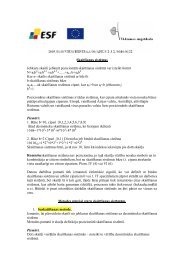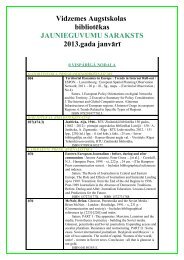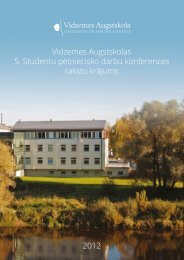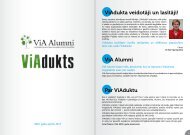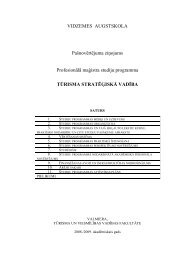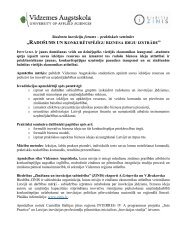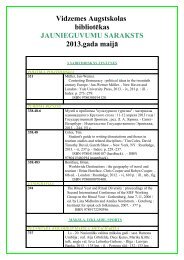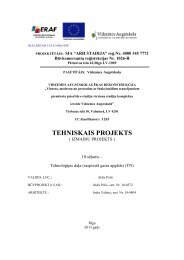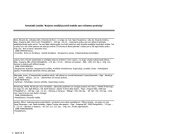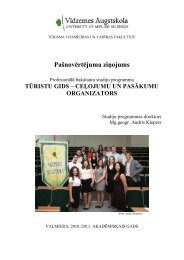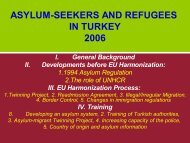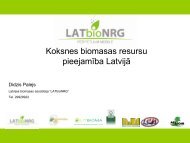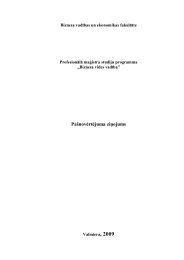Proceedings
Proceedings
Proceedings
Create successful ePaper yourself
Turn your PDF publications into a flip-book with our unique Google optimized e-Paper software.
Monitoring of the Great Snipe and the Black Grouse in Specially<br />
Protected Nature Territories<br />
EDWARD MONGIN 1 , YURI BOGUTSKI 2 , NICHOLAS CHERKAS 3<br />
Abstract<br />
The Great Snipe Gallinago media and the Black Grouse Tetrao tetrix are species the numbers of which has<br />
considerably decreased on the territory of Belarus as a result of transformation and destruction of their habitats.<br />
Long-term censuses of these species were conducted on the territory of the National Park “Belovezhskaya Puscha”<br />
and the Berezinsky Biosphere Reserve. The Great Snipe censuses have been conducted on three permanent leks<br />
annually since 2001. For the Black Grouse, we analyzed archive and own data of the censuses performed on the<br />
territory of Belovezhskaya Puscha since 1952, as well as own census data obtained on the territory of the Berezinsky<br />
Reserve since 1999.<br />
It was ascertained that within an extremely short period of time, many native habitats of the Great Snipe can<br />
become unsuitable because of flood-plain meadows overgrowth in the absence of cattle pasture. On the territory<br />
of Belovezhskaya Puscha, a decrease in the Black Grouse population by six-times from the beginning of 1960<br />
was observed. In the Berezinsky Reserve, the short period of observation did not allow to determine the longterm<br />
tendencies of the change in the Black Grouse numbers. The main reasons for a decrease in the Black Grouse<br />
numbers are anthropogenic factors, such as melioration and use of lands for agricultural purposes, which caused<br />
transformation of the natural habitats. On the transformed territories, displaying grounds for this species are typically<br />
overgrown with bushes and trees. Further negative impact on the Black Grouse population is also caused by hunting<br />
and poaching activities.<br />
Introduction<br />
The Great Snipe Gallinago media and the Black Grouse<br />
Tetrao tetrix are bird species with a lek-based mating<br />
system. Both species use successional habitats exposed to<br />
heavy human activity. Distribution of the Great Snipe in<br />
Belarus is associated with floodplain meadows and reach<br />
fens (Mongin, 2008). The Black Grouse’s areal mainly<br />
coincides with the distribution of birch. Its typical native<br />
habitats are marshy birch forests on the south of the forest<br />
zone. Such habitats are bordered by birch-aspen copses<br />
and meadows that provide year-round living conditions<br />
due to the abundance of birch catkins (Gavrin, 1969).<br />
In spite of the differences in the protection status of<br />
the Great Snipe and the Black Grouse, populations of<br />
both species have strongly declined on the territory of<br />
Europe before 1990. At present, further reductions in the<br />
numbers of these species are registered in many countries.<br />
The Great Snipe is one of the bird species currently<br />
classified as globally near-threatened (IUCN, 2004).<br />
At the European level, the Great Snipe is considered<br />
as severely declining and classified as SPEC1 (Birdlife<br />
International, 2004). The Black Grouse is a widespread<br />
resident and its European breeding population is very<br />
large. Nevertheless, its numbers have become smaller<br />
and its habitats more fragmented during the last 50<br />
years. The species has SPEC3 category and is evaluated<br />
as Depleted (Birdlife International, 2004).<br />
In Belarus, the Great Snipe was historically considered<br />
as widespread and a common breeding species in all<br />
regions where suitable habitats existed (Fedyushin &<br />
Dolbik, 1967). According to the new data gathered<br />
during 2000-2001 (Mongin, 2002), it was estimated that<br />
Great Snipe habitats have been reduced by at least 50%<br />
over the past 40 years. The decline of the breeding Great<br />
Snipe population in Belarus was caused predominantly<br />
by habitat loss.<br />
Small decrease of the Black Grouse population was<br />
noted in the Eastern regions of Belarus as early as in<br />
the beginning of the 20 th century (Fedyushin & Dolbik,<br />
1967). Afterwards, censuses conducted by Dolbik<br />
have shown that by the end of the 1970s Black Grouse<br />
population in many places decreased almost two-fold<br />
1<br />
Institute of Zoology NAS, Academicheskaya Str. 27, 220072 Minsk, Belarus, e-mail: edward.m@list.ru<br />
2<br />
Berezinski Biosphere Reserve, Domzeritsy, Vitebsk Region, Belarus<br />
3<br />
Belovezhskaya Puscha National Park, Kamenyuki, Brest Region, Belarus<br />
65



